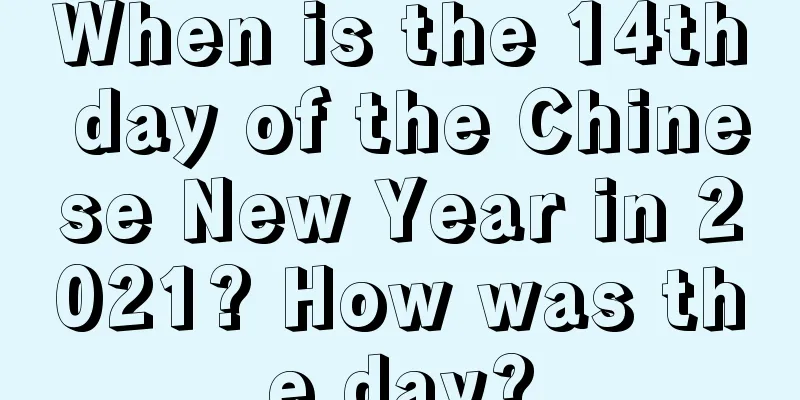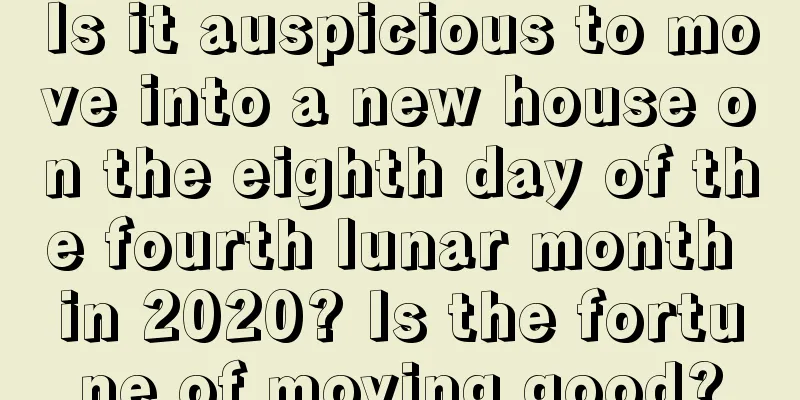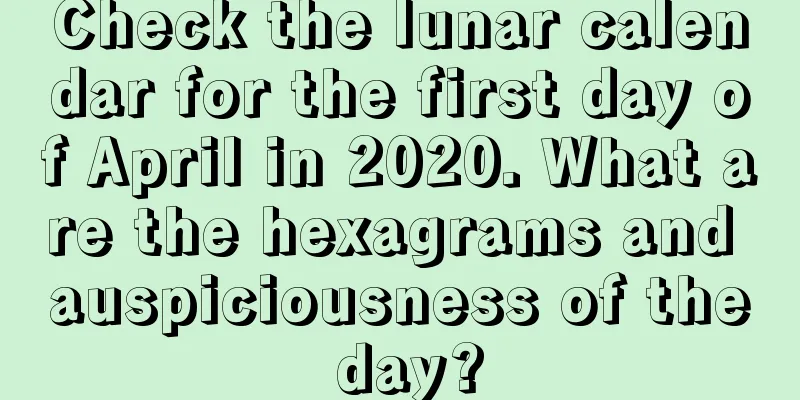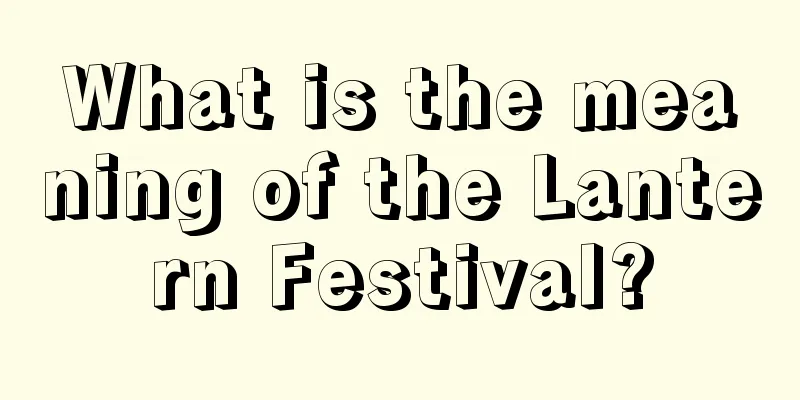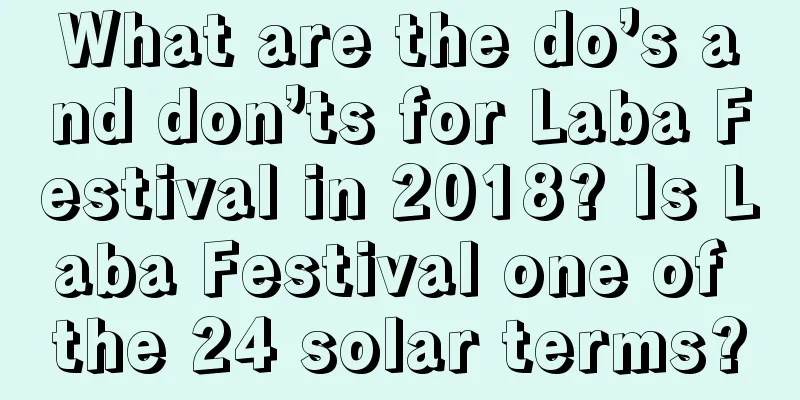How did the Bagua Feng Shui compass come about?

Introduction: The Bagua Feng Shui compass is closely used in Feng Shui. Qian, Gen, Kun, Xun, Kun, Xun, Li and Dui are the most mysterious Chinese characters. The changes of all things in the world are based on the same principle. Combined with the compass Feng Shui, we can explain all things and explore the world. So what is the origin of Bagua Feng Shui? What are the attributes of Bagua? Let’s follow the editor to learn more about it! The compass plays a big role in Feng Shui, but there are also many things to pay attention to. Let's take a look at them below.The origin of the Bagua Feng Shui compassAccording to legend, when Dayu was controlling floods, a divine tortoise came out with a map on its back. The map showed that the center five was the pole, governing the four directions, with one side nine on its back, three on the left and seven on the right, two and four were shoulders, and six and eight were feet. The one on the back is the one white water from the Zi direction of the Kan hexagram, the nine facing the face is the nine purple fire from the Wu direction of the Li hexagram, the three on the left is the three green wood from the Mao direction of the Zhen hexagram, the seven on the right is the seven red gold from the You direction of the Dui hexagram, two and four are the shoulders, the right shoulder is the two black earth from the southwest Kun hexagram, the left shoulder is the four green wood from the southeast Xun hexagram, six and eight are the feet, the right foot is the six mortars gold from the northwest Qian hexagram, and the left foot is the eight mortars earth from the northeast Gen hexagram. Therefore, the ancient sages said: The Emperor comes out from Zhen, meets in Xun, meets in Li, is led to service in Kun, speaks in Dui, fights in Gan, works in Kan, and accomplishes his words in Gen. At the same time, the ancient sages also added the northern Ren and Gui water on both sides of the Zi direction, the eastern Jia and Yi wood on both sides of the Mao direction, and the southern Bing and Ding fire on both sides of the Wu direction, the Jiu Zi fire. Add the western Geng and Xin metals to both sides of the seven red metals in the You direction. The two earthly branches Chou and Yin are added to the northeast sides of the eight mortars of earth in the Gen hexagram, the two earthly branches Chen and Si are added to the southeast sides of the four green wood in the Xun hexagram, the two earthly branches Wei and Shen are added to the southwest sides of the two black earths in the Kun hexagram, and the two earthly branches Shu and Hai are added to the northwest sides of the six mortars of gold in the Qian hexagram. These are the Bagua Feng Shui compasses that have been passed down to this day by the ancient sages of our country.In the Tang Dynasty, Feng Shui master Yang Yunsong combined the two major positioning systems of the Eight Trigrams and the Twelve Earthly Branches into one, forming the Eight Trigrams Feng Shui Compass, and added all the ten Heavenly Stems of Jia, Yi, Bing, Ding, Wu, Ji, Geng, Xin, Ren, and Gui, except for the two stems Wu and Ji representing the position of the center palace, to the Earthly Position System to indicate directions. Therefore, the 360 degrees of the celestial sphere are divided into 24 equal parts, called 24 mountains. Each mountain occupies 15 degrees. Three mountains form a hexagram, and each hexagram occupies 45 degrees. The Twenty-Four Mountains were created in the Tang Dynasty and have been preserved to this day. Therefore, the twenty-four mountains on the ground are one of the main levels of Yangpan. The three mountains in the north are Ren, Zi and Gui, which belong to the Kan hexagram after birth and the Kun hexagram before birth; the three mountains in the northeast are Chou, Gen and Yin, which belong to the Gen hexagram after birth and the Zhen hexagram before birth. The Feng Shui compass with magical powers should be a collection of the spirits of yin and yang, the principles of the Eight Trigrams and Five Elements, the numbers of the River Map and Luoshu, and the shapes of the celestial star trigrams. Among the Five Elements, there are the positive Five Elements, the Shuangshan Five Elements, the Xiaoxuankong Five Elements, the Hongfan Five Elements, and the Suchong Five Elements. The Eight Trigrams also have the Xiantian Eight Trigrams, the Acquired Eight Trigrams, and so on. It can be said to be varied and all-encompassing, but it can also be summarized in a simple form. The Eight Trigrams attribute water intake method: 1. Qian, Gen, Kun and Xun belong to wood. 2. Yi, Xin, Ding and Gui belong to earth. 3. Zi, Wu, Mao, You, Jia, Geng, Bing and Ren belong to fire. 4. Chen, Xu, Chou and Wei belong to metal. 5. Yin, Shen, Si and Hai belong to water. Gossip attributes:1. Wood overcomes earth and represents wealth.2. Water gives birth to wood, which is precious. 3. Wood is prosperous when it meets other wood. 4. Wood produces fire for release. 5. Metal overcomes wood and is killing. In the "Huangdi Zhaijing" that appeared in the Tang Dynasty or later, the guiding principle for building a house was to match the Yin-Yang Eight Trigrams with the Heavenly Stems and Earthly Branches and divide them into twenty-four roads, which applied the Liuren style plate to house feng shui. The book contains diagrams of both Yin and Yang houses with detailed explanations. The diagram of the Yang house is shown below. The book says: "The twenty-four roads are divided into four sides of the central courtyard according to the size of the house, which consist of ten stems (should be eight stems, but Wu and Ji are not used), twelve branches, Gan, Gen, Kun, and Xun, a total of twenty-four roads." "Twenty-four roads" are also called "twenty-four mountains", which are the twenty-four directions on the four sides of the house. Their representation method is the same as that of the Si Nan. According to the "Book of Houses", Qian, Zhen, Kan, Gen and Chen are yang positions, Kun, Xun, Li, Dui and Xu are yin positions, Yang starts with Hai and ends with Si, Yin starts with Si and ends with Hai. All directions are related to good and bad luck. Those who follow them will "have a safe family, prosperous and wealthy", while those who go against them will "have their family broken up and their descendants extinct". Around the late Tang Dynasty, the compass was invented and was widely used in Feng Shui. In Bu Yingtian's "Xue Xin Fu", there is a saying that "to determine the direction, the Ziwu needle should be used as the correct direction." According to later explanations, the Ziwu needle is the compass. The "Qing Nang Haijiao Jing" of the Nine Heavens Mysterious Lady said: "The Mysterious Lady determined the direction by the rising and setting of the sun during the day, and determined the direction and air by the division of the sky by the constellation of Zi at night. She used Chiyou as a compass, and thus achieved the precise determination of directions and positions. First there were the directions of the celestial branches and the directions of the earthly branches. Later, a copper plate was made to match the twenty-four directions. The heavenly stems formed the celestial plate, and the earthly branches formed the earthly plate." The origin of the compass mentioned in this passage is derived from mythology, but it can be known that the original form of the compass was composed of a celestial plate and a earthly plate, with the twenty-four directions mainly engraved on it. Generally speaking, the compass is the product of the combination of the Si Nan and Liu Ren style plates. Later, it became more and more complicated and mysterious in the hands of Feng Shui masters. Summary: The above is the analysis of the origin of the Bagua Feng Shui Compass and the attributes of the Bagua. Those who are interested can refer to it! I hope the above content is helpful to everyone! |
<<: Is the Eight House Feng Shui compass related to orientation? How to calculate house destiny?
>>: Appreciation of folk ancestral tomb feng shui stories
Recommend
What month is the fifth month of the lunar calendar in the solar calendar? What solar terms are there?
Everyone has different fortunes in different years...
Can’t the funeral be held on the eighth day of the third lunar month in 2018?
Introduction: Birth and death are the normal laws ...
Is it a good idea to get married on December 21st of the lunar calendar in 2019?
China is a country that pays great attention to a...
Is the sixth day of the sixth lunar month in 2022 an auspicious day? Can I pray?
The good and bad days in the lunar calendar are di...
Is it a good idea to pick up the car on August 26th of the lunar calendar in 2021? What details should I pay attention to when picking up a car?
Each season is divided into three months: Meng, Zh...
Will the God of Wealth be welcomed on the 29th day of the twelfth lunar month in the Year of the Pig in 2019? Various gods of wealth and songs!
The 29th day of the twelfth lunar month is also ca...
What are the taboos on the Beginning of Spring that we can and cannot do? Can I go out on the beginning of spring?
The Beginning of Spring is one of my country's...
Is the fate of people born on the ninth day of the first lunar month in 2022 good? When is the best time to be born?
The first month is the month when the new year beg...
Is it a good idea to move into a new house the day before Grain in Ear in 2020? What time is Grain in Ear in 2020?
Introduction: You need to choose an auspicious day...
Is the second day of the fifth lunar month in 2019 suitable for traveling?
The fifth month of the lunar calendar is the middl...
Is the Labor Day in 2018 a good date? Is it an auspicious day?
Introduction: According to the tradition of our co...
Is the fifteenth day of the twelfth lunar month in 2018 an auspicious day?
Is the fifteenth day of the twelfth lunar month in...
Is it not suitable to move house one day after the beginning of spring in 2021? Proverbs about the beginning of spring
Introduction: It is generally necessary to choose ...
Interpretation of Feng Shui for the bedroom in the house—auspicious layout and taboos for the bedroom in 2020!
The bedroom is where we rest, so it should be quie...
How to arrange farming activities during Jingzhe? What is the significance of Jingzhe?
The 24 solar terms are closely related to my count...

